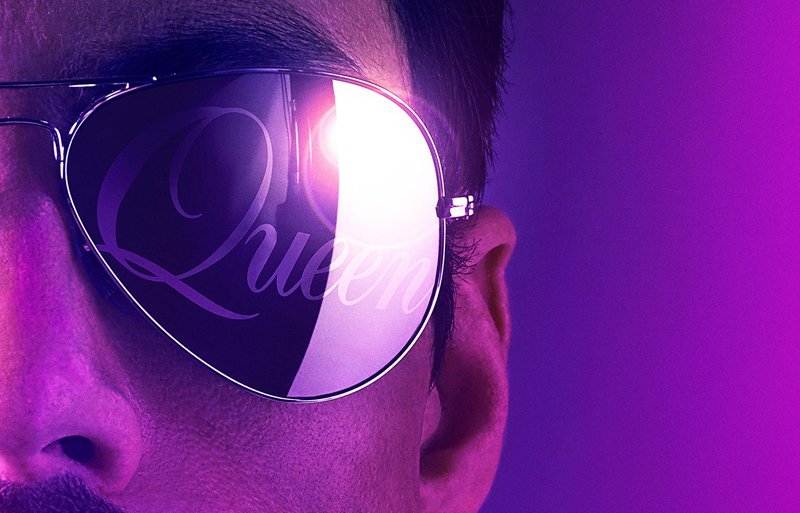Bohemian Rhapsody
December 13, 2018
On November 2, 2018, the much anticipated biopic about Freddie Mercury, lead singer of 80s band Queen, was released.
This movie promised a story line surrounding the rise of the band through stardom, Mercury’s own downfall, and LGBTQ+ representation. And, for most people, it delivered.
The movie opens on the historic performance of Queen at Live Aid in 1985 with Freddie Mercury, played by actor Rami Malek, leading the way to the stage. Before delving into the performance itself, audiences are taken to the beginning of Freddie’s career, before Queen formed in 1970, before he even knew his band members, Brian May, Roger Taylor, and John Deacon.
The movie continues on Mercury’s path towards stardom, with the creation of Queen’s first album to releasing Bohemian Rhapsody, and exploring through almost two decades of musical genius, credited to each member of the band.
Mercury, an icon amongst communities of this age and of his own by defying labels and heteronormativity, was bisexual. Some of the strongest criticism surrounding this movie stemmed from how it would handle Freddie’s bisexuality. Before the movie was released, critics claimed the movie suffered from bi-erasure.
The movie depicts in great detail the relationship that Mercury had with partner and life-long friend Mary Austin. However, when he begins catching the eyes of men, Mercury realizes that he is attracted to both men and women.
But Mary erases that as a possibility, both in the movie and in real life.
“I’ll never forget that moment,” Austin told the Daily Mail in an interview. “Being a bit naive, it had taken me awhile to realize the truth. Afterwards he felt good about having finally told me he was bisexual. Although I do remember saying to him at the time, ‘No Freddie, I don’t think you are bisexual. I think you are gay.’”
This statement is a testament to many viewer’s frustrations regarding bi-erasure within Bohemian Rhapsody, especially as Mercury, who has been an inspiration to the LGBTQ+ community as a symbol of acceptance, never personally disclosed his sexuality publicly.
Perhaps what is most frustrating about this movie is the lack of depth given to Mercury’s personal life, specifically revolving around his religion and familial roots.
Mercury, born as Farrokh Bulsara, was raised Zoroastrian, but this is barely mentioned, let alone made explicitly known. And while he did not practice very heavily in his adult life, upon Mercury’s death, he had asked for a very traditional Zoroastrian ceremony.
This movie was made to gloss over the hardships and nitty-gritty details of Freddie’s life. It never fully develops a raw look at the highlights and struggles of his career. The movie rather focuses on an overdramatized party lifestyle, filled with implicit homosexuality. Scenes which featured his male partners often indicated severe substance abuse and unhealthy sexual promiscuity, implying he deserved the AIDS diagnosis because of his raucous lifestyle.
However, the movie does little to negate the assumption that homosexuality is equated with promiscuous behavior. Furthermore, it develops into the concept of whether or not Mercury wanted to be an icon, whether he wanted to be known as the bisexual poster boy. Or as the face of the AIDS campaign.
Throughout the movie, and Mercury’s career, he is frequently questioned by friends and reporters regarding his sexual orientation. However, Mercury avoids the question, asking its relevance to the music that they created, supported by his band mates. Furthermore, no one publicly knew of his AIDS diagnosis until November of 1991, when he released this statement, “Following enormous conjecture in the press, I wish to confirm that I have been tested HIV-positive and have AIDS. I felt it correct to keep this information private in order to protect the privacy of those around me.”
Moreover, the movie pushed Mercury’s AIDS diagnosis to fit within the story line, shoving it into 1985 to fit with the iconic Live Aid performance that broke headlines as if it was a last-ditch effort to fight for his life. In actually, Mercury was diagnosed in 1987, two years following the performance.
Despite some of its many flaws, Bohemian Rhapsody was dynamic and flamboyant. Malek’s portrayal of these ideas was almost perfect, down to the smallest hip thrust or lip pursing, or drawled ‘darling.’
Queen was most popular during the glam of 80s rock-n-roll, but their music still heavily resonates with kids of the 21st century.
This new generation of music-lovers finds so much hope and happiness within this music, made for misfits by misfits. The music aged well, still causing kids all across the country to burst into a chorus of ‘Bohemian Rhapsody’ or to stomp their feet along with ‘We Will Rock You.’
‘Bohemian Rhapsody’ really is a movie of its time. With stellar acting from a widely talented cast and a soundtrack that will never fail to disappoint, this move is influential for all generations.





